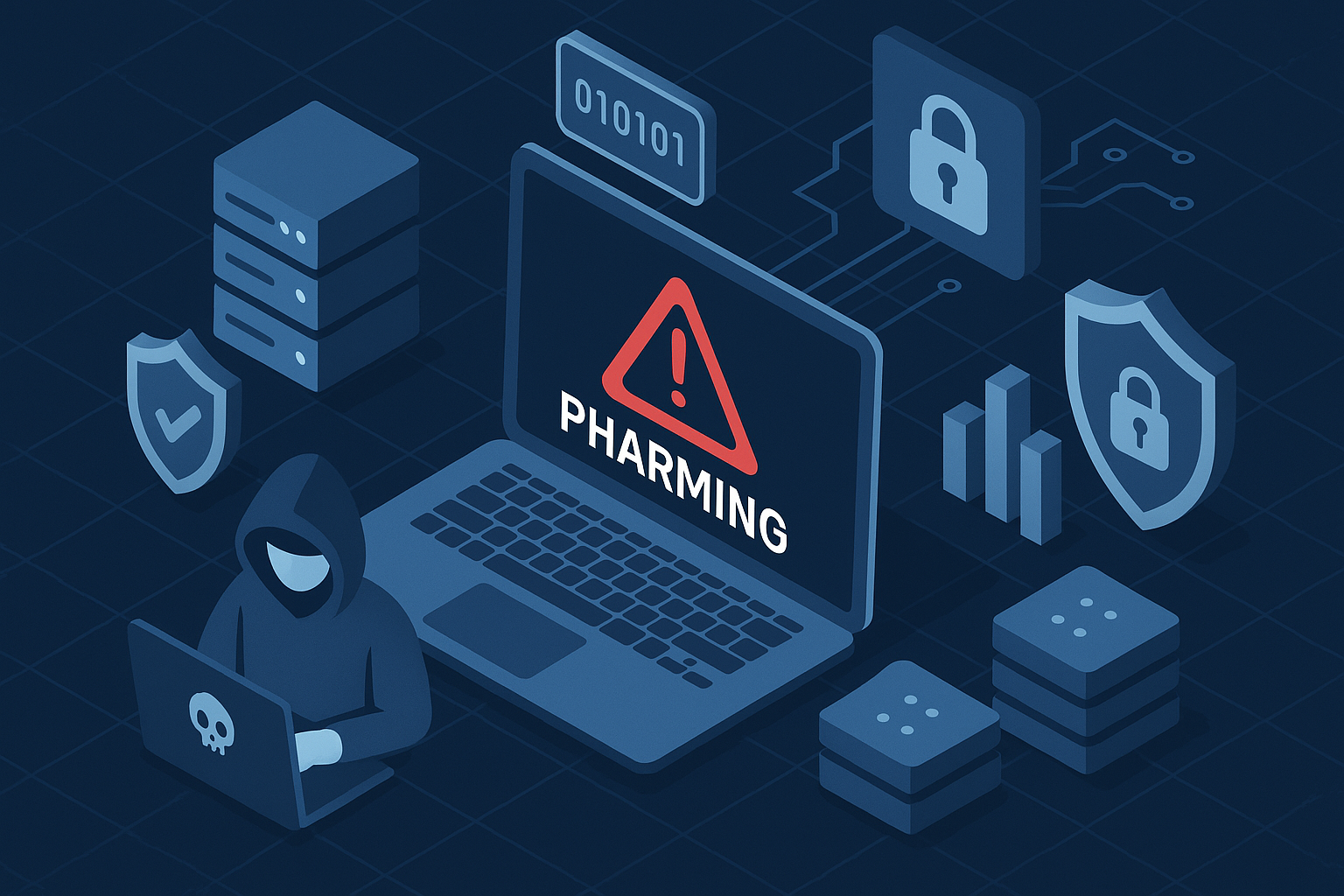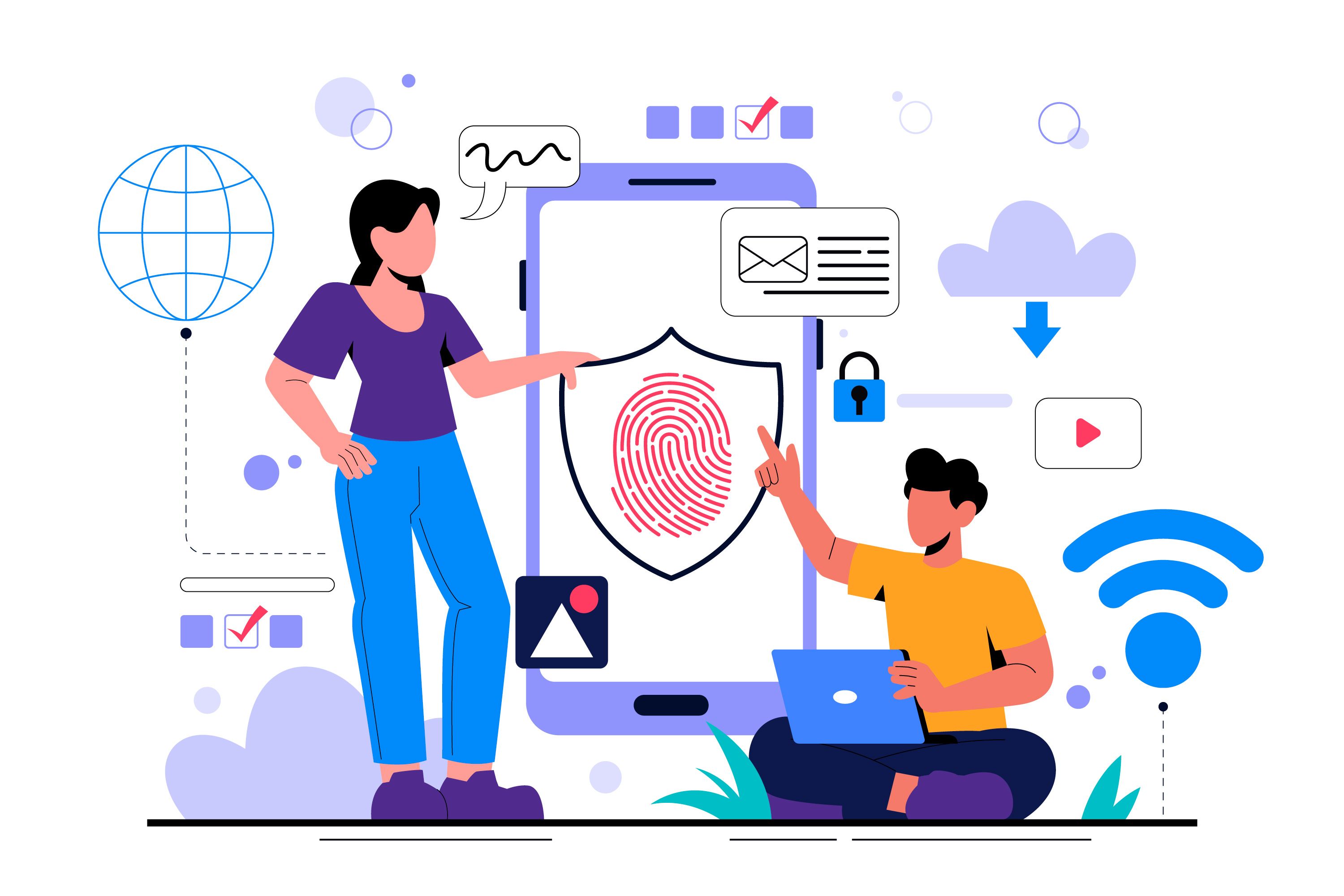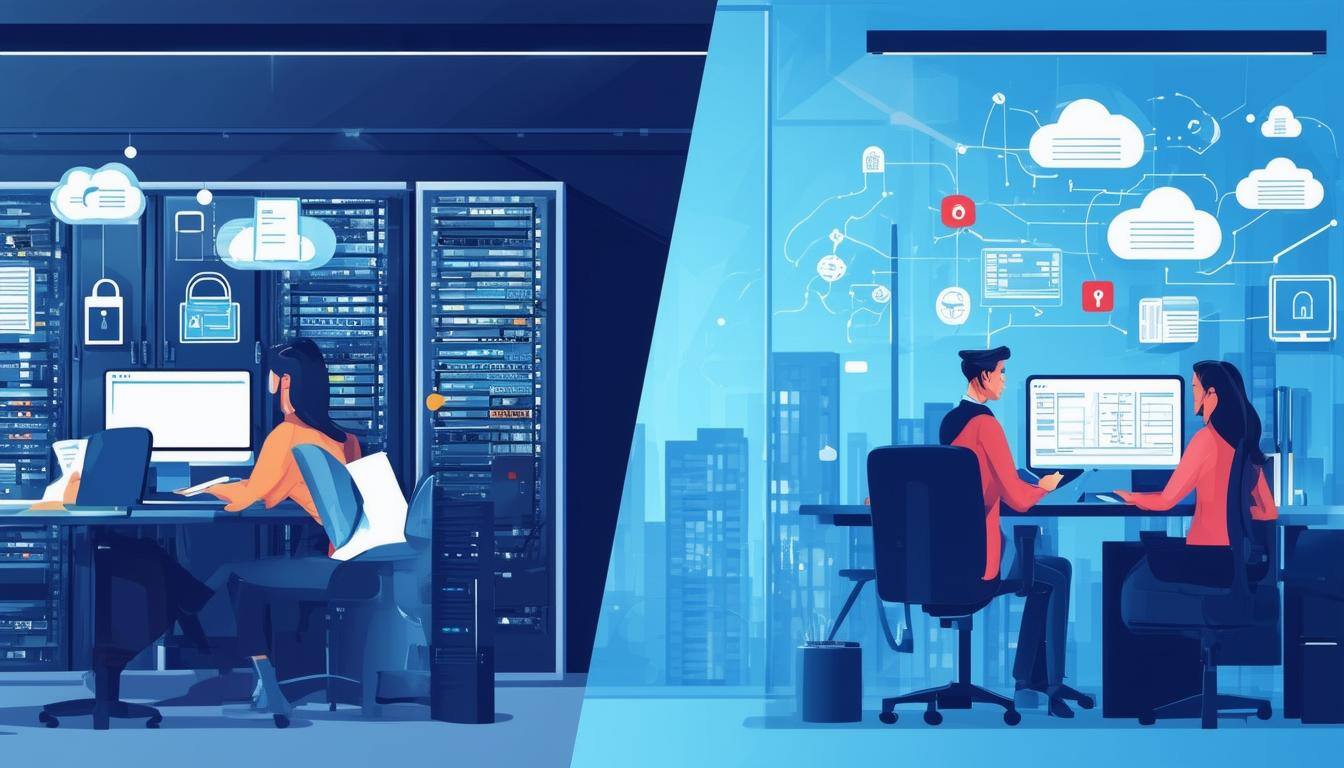Pharming Attacks and Payroll Security: How to Protect Your Data
October 7th, 2025
8 min read

Have you ever wondered if your employees could be entering login credentials on a fake site without realizing it? Or questioned whether your IT defenses are strong enough to catch cybercriminals who silently reroute traffic away from trusted systems? With sophisticated threats like pharming emerging daily, implementing or securing a payroll system can feel overwhelming—especially when these attacks bypass even savvy users, putting sensitive employee and financial data at direct risk.
At Lift HCM, security isn’t just an add-on — it’s at the core of everything we do. We’ve helped hundreds of businesses transition to more efficient, compliant payroll systems while prioritizing data protection at every stage. That means combining the trusted foundation of isolved People Cloud with rigorous internal security training and proactive defense measures to safeguard sensitive payroll and HCM information.
This article breaks down one of the most insidious cyber threats facing payroll and HR teams today — pharming attacks. It answers your most pressing questions — from how they work to how to stop them — so you can confidently protect your data, your employees, and your business.
Table of Contents
- What Are Pharming Attacks and Why Are They So Insidious?
- How Do Pharming Attacks Work? Understanding the Mechanisms
- The Business Impact of Pharming on HCM Data Protection
- Why Pharming Attacks Work So Well and How to Spot Them
- What Employees Should Do If They Suspect a Pharming Attack
- Building a Security-First Culture: The Role of Training in Pharming Defense
- Tools and Technologies That Strengthen Payroll System Security
- Your Next Step: Proactive Payroll Security for Lasting Peace of Mind
What Are Pharming Attacks and Why Are They So Insidious?
Pharming is a type of cyberattack that redirects users to a fraudulent website without their knowledge—even if they type in the correct URL. Once on the fake site, victims unknowingly enter credentials or sensitive data, which are immediately stolen by attackers.
Pharming vs. Phishing: A Subtle but Crucial Difference
Phishing relies on social engineering — tricking users into clicking malicious links sent through email, text (smishing), phone calls (vishing), or QR codes (quishing). Pharming is more insidious because it preys on trust. The user performs all the correct actions — typing the right address, checking for HTTPS — yet still ends up on a malicious site. Because the redirection happens invisibly in the background, victims often don’t realize anything is wrong until it’s too late.
Why Payroll Logins are Prime Targets
For HR managers and payroll leaders, payroll and HCM portals are among the most critical systems in the company. A pharming attack targeting these systems can compromise:
- Financial Data: Bank account and direct deposit information for all employees.
- Personal Data: Social Security Numbers (SSNs), home addresses, and dates of birth.
- System Access: Credentials that grant criminals entry into broader HR and financial management systems, leading to large-scale data breaches and fraud.
This combination of sensitive data makes payroll systems a top target — and a single breach can cascade into large-scale financial fraud and compliance violations.
How Do Pharming Attacks Work? Understanding the Mechanisms
Pharming attacks exploit technical vulnerabilities rather than human error. Here’s how attackers execute these silent redirects:
1. DNS Manipulation (or Poisoning)
This is the most common form of pharming. Attackers compromise Domain Name System (DNS) servers or local DNS caches. The DNS acts like the phonebook of the internet, translating a website address into an IP address. When the DNS is "poisoned," it gives the user the wrong IP address, redirecting them to a fake site controlled by the attacker.
2. Malware-Based Redirects
In this method, malware infects individual devices or home/office routers. This malicious software then alters the device’s local DNS settings or host files, silently rerouting traffic to attacker-controlled IP addresses. Even if employees are correctly typing the secure corporate payroll address, the malware ensures they land on a fraudulent replica.
3. Fake Websites and Credential Harvesting
The final step is the fraudulent portal itself. These fake sites are designed to look identical to real ones, complete with branding, logos, and often even realistic-looking HTTPS indicators. Once victims unknowingly enter their credentials, the attackers immediately harvest the data for profit. This combination of invisible redirects and convincing replicas makes pharming particularly dangerous for organizations managing sensitive financial and employee data.
The Business Impact of Pharming on HCM Data Protection
Pharming is not about curiosity—it is profit-driven, and for businesses, the consequences extend well beyond one compromised account or employee.
Direct Financial Impacts
Attackers pursue several profit-driven goals:
- Credential Theft: Capturing employee logins, payroll portal access, and customer accounts.
- Financial Fraud: Using stolen payroll credentials to execute unauthorized transfers, alter direct deposit instructions, or engage in payment redirection.
- Data Harvesting: Collecting personal and financial information for resale on the dark web, which can be leveraged for identity theft.
Compliance and Regulatory Consequences
For HR managers, the fallout includes significant compliance headaches. Large-scale data breaches triggered by pharming can lead to violations of major regulatory frameworks:
- HIPAA: If employee health or benefits data is compromised.
- GDPR/CCPA: If personal identifying information (PII) is stolen for current or former employees.
- IRS Regulations: Failure to protect financial and tax-related payroll records.
📊 Industry Stat: Ponemon Institute research shows the average cost of a data breach in the U.S. is $10.22 million, making prevention far more cost-effective than recovery.
Why Pharming Attacks Work So Well and How to Spot Them
Pharming succeeds because it preys on trust and technical blind spots. Victims don’t click anything suspicious—the redirection happens in the background, and a poisoned DNS server can impact thousands of users at once.
Four Warning Signs Your Organization May Be Under Attack
Pharming is difficult to detect, but there are warning signs your HR or IT teams should watch for:
- Traffic Anomalies: Sudden, unexplained drops in visits to legitimate payroll portals or employee-facing applications (because users are being rerouted).
- User Reports: Multiple employees noticing altered account details, being repeatedly unable to log in, or receiving unusual security alerts after attempting to access a trusted system.
- Unexpected Code Changes: Alterations in the layout of login portals or employee applications that don't match expected system updates.
- URL and Certificate Issues: If an employee accesses a known site and the URL appears slightly misspelled, or if the SSL certificate seems outdated or invalid, it is an immediate red flag.
Understanding these warning signs empowers your team to act quickly. Here's exactly what employees should do if they suspect an attack.
What Employees Should Do If They Suspect a Pharming Attack
Quick action can drastically reduce the impact of a pharming attack. The faster an employee responds, the less damage the attacker can inflict.
Immediate Response Protocol
Employees should:
- Notify IT Immediately: This is the critical first step so investigations can begin and the source of the redirect can be isolated.
- Change Passwords: Change passwords completely, avoiding small alterations. Use at least 16 characters with a mix of uppercase, lowercase, numbers, and symbols.
- Check Financials: Specifically check recent paycheck stubs or direct deposit settings within the payroll portal for unauthorized changes to bank information.
- Monitor Credit: Place fraud alerts or credit freezes with the major bureaus (Equifax, Experian, and TransUnion) to prevent identity theft.
- Adopt Passkeys: Where supported by your HCM system, adopt passkeys. Passkeys tie access to both the device and the service using biometrics or PINs, making pharming-stolen credentials useless.
Building a Security-First Culture: The Role of Training in Pharming Defense
While technology provides critical defensive layers, your employees remain the first line of defense against pharming attacks. A well-trained workforce doesn't just reduce risk—it accelerates detection and minimizes damage when attacks occur.
The Training Advantage: Quantifiable Impact
📊 Industry Stat: Organizations with well-trained staff detect and contain breaches 28% faster than those without comprehensive security training (IBM Cost of a Data Breach Report, 2024).
This faster detection translates directly to reduced breach costs and business disruption. The difference between early detection and prolonged exposure can mean the difference between a contained incident and a company-wide crisis.
What Pharming-Specific Training Must Include
Effective pharming defense training goes beyond generic cybersecurity awareness. HCM and payroll teams need targeted education that addresses the unique characteristics of these attacks:
Critical Training Components:
1. URL Verification Protocols
- How to examine the full URL before entering credentials
- Recognizing subtle domain misspellings (e.g., "payr0ll" vs "payroll")
- Verifying HTTPS and certificate authenticity
2. Security Certificate Recognition
- Understanding what the padlock icon means (and doesn't mean)
- How to view and verify SSL certificate details
- Identifying expired or mismatched certificates
3. Interface Change Detection
- Teaching users to recognize their payroll system's authentic interface
- Identifying subtle design differences in fraudulent portals
- Establishing a reporting protocol for unexpected interface changes
4. Attack Simulation Exercises
- Quarterly pharming simulations to test detection capabilities
- Safe, controlled environments for practicing response protocols
- Immediate feedback and remediation training for failed simulations
💡 Pro Insight: The most effective training programs combine quarterly formal sessions with monthly micro-learning modules—5-minute focused lessons on specific threats delivered via email or internal platforms.
Integrating Training with Technical Controls
Training achieves maximum effectiveness when paired with technical defenses:
| Defense Layer | Training Role | Technical Control |
|---|---|---|
| DNS Security | Teach employees to recognize redirect warnings | DNSSEC validation prevents poisoning |
| Endpoint Protection | Train on malware recognition and reporting | Anti-malware blocks host file manipulation |
| Authentication | Enforce MFA adoption and proper use | MFA blocks stolen credential usage |
The synergy between trained users and robust technical controls creates a defense-in-depth strategy that's greater than the sum of its parts. Technology blocks most attacks automatically, while training enables employees to identify and report the sophisticated attempts that slip through.
Training Program Implementation
Investing in comprehensive security training delivers measurable returns by reducing incident response time, minimizing user-caused security incidents, and creating a security-aware culture.
Building an Effective Program
Content Development:
- Partner with cybersecurity experts to create pharming-specific modules
- Include real-world case studies from your industry
- Customize scenarios to match your actual payroll and HCM systems
- Update content quarterly to address emerging threats
Delivery Methods:
- Live quarterly training sessions (virtual or in-person)
- On-demand video modules for new hires and refreshers
- Monthly micro-learning emails with quick security tips
- Interactive simulations that test real-world response
Measuring Effectiveness:
- Track simulation exercise performance over time
- Monitor incident reporting rates (increased reporting = better awareness)
- Conduct pre- and post-training assessments
- Measure time-to-report for simulated attacks
Action Steps for HR and IT Leaders
Immediate Actions (This Quarter):
- Audit current security training programs for pharming-specific content
- Schedule quarterly pharming simulation exercises
- Create a clear incident reporting protocol for suspected attacks
- Distribute reference cards with URL verification checklists
Ongoing Initiatives:
- Monthly micro-learning modules on emerging threats
- Annual review and update of training materials
- Cross-functional collaboration between IT, HR, and security teams
- Metrics tracking for training completion and simulation performance
🎯 Bottom Line: Combining MFA and DNSSEC with ongoing employee training creates a strong, security-first culture that amplifies your technical protections. Businesses that unite advanced controls with targeted training see better results than those relying solely on technology.
Tools and Technologies That Strengthen Payroll System Security
While training builds awareness, technology strengthens resilience. Layering these defenses creates multiple checkpoints for attackers to bypass—reducing risk significantly.
MFA: The Crucial Barrier to Payroll Credential Theft
Multi-Factor Authentication (MFA) is the single most important technical defense against credential theft of any kind, including pharming. Even if credentials are stolen via a pharming attack, MFA adds another layer of security. The attacker still cannot log in without the secondary token (usually a code sent to a phone or generated by an app).
Why MFA is Critical for Pharming Defense:
- Blocks 95% of credential-based attacks
- Works even when users are redirected to fake sites
- Low implementation cost relative to breach prevention
- Compatible with most modern HCM and payroll systems
MFA Best Practices:
- Require MFA for all payroll and HCM portal access
- Use app-based authenticators (Google Authenticator, Microsoft Authenticator) rather than SMS when possible
- Implement backup authentication methods for locked-out users
- Consider hardware security keys for high-privilege accounts
📌 For a deeper dive into why MFA is essential for business security, read: What Is Multi-Factor Authentication and Why Your Business Needs It Now
Additional Critical Technologies
Secure DNS Services (DNSSEC)
Using providers with DNSSEC (DNS Security Extensions) validation prevents tampered responses and blocks DNS poisoning attacks at the source.
Key Benefits:
- Validates DNS responses cryptographically
- Prevents attackers from injecting fake IP addresses
- Works transparently without user interaction
- Enterprise-grade providers include Cloudflare, Google Cloud DNS, and AWS Route 53
Endpoint Protection and Anti-Malware
Tools that actively detect host file manipulation, DNS hijacking, and unauthorized redirects on employee devices.
Essential Features:
- Real-time behavioral analysis
- Host file integrity monitoring
- DNS hijacking detection
- Automatic remediation of malware-based redirects
Web Filtering and DNS Monitoring
Blocking access to known malicious sites and continuously monitoring DNS traffic for sudden anomalies that signal an active pharming attack.
Implementation Considerations:
- Deploy at network perimeter and endpoint level
- Configure alerts for suspicious DNS query patterns
- Maintain updated threat intelligence feeds
- Review logs quarterly for emerging attack indicators
💡 Pro Insight: The most effective security posture combines all four layers—MFA, DNSSEC, endpoint protection, and DNS monitoring—creating redundancy that ensures if one defense fails, others remain active.
Your Next Step: Proactive Payroll Security for Lasting Peace of Mind
Together, these proven strategies empower your team to stay ahead of evolving cyber threats and protect what matters most—your people and your payroll data. By making security an ongoing priority, not a one-time project, you can minimize risk, meet compliance obligations, and maintain the trust of your employees and stakeholders.
At Lift HCM, we believe every business deserves peace of mind when it comes to payroll security. With expert guidance, tailored technology, and continuous support, you can confidently ensure your payroll systems remain resilient against even the most sophisticated threats. Don’t wait for an incident to highlight vulnerabilities—take proactive steps now to secure your environment and create a culture of cyber awareness that benefits your entire organization.
Explore how Lift HCM can help you strengthen your payroll security today!
Caitlin Kapolas is a results-driven professional with a strong background in account management and retail. She is dedicated to improving client experiences and building lasting relationships. Caitlin excels in identifying client needs, resolving issues, and implementing customized solutions that drive value. Her effective communication skills ensure high client satisfaction and loyalty, making her a trusted advisor and partner in meeting client needs with precision and professionalism.
Topics:








.jpg?width=3000&height=2000&name=11641796_4751965(1).jpg)

